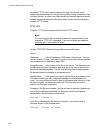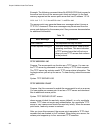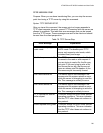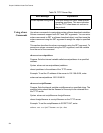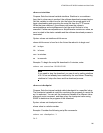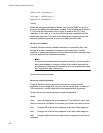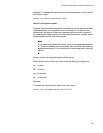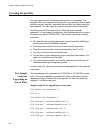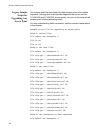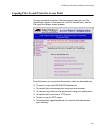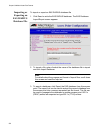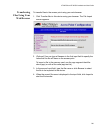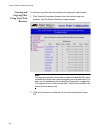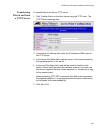
Chapter 9: Additional Access Point Features
288
Creating Script Files
You can create a script file that executes a series of commands. For
example, when you upgrade the access point, you typically need to erase
the flash memory segment, download the new files, and reboot using the
new software. You can create a script file to perform these commands.
Script files are ASCII text files with a 32-byte file system header
appended. You may need to contact your local representative for a copy of
the header file called FILEHDR.EXE. Follow these rules when creating
script files:
The total file size including the header must be less than 4096 bytes,
which is the size of the RAM file segment.
Each line in the script file must have fewer than 80 characters
Each line in the script file must be terminated by an LF or CR.
You can only have one command per line.
Any file that is to be uploaded by script must have a file header. This
does not include the script file itself.
You can include comments on a line by using the pound (#) sign; all
characters after a pound sign are ignored.
To test a script file, log onto an access point and type each of the script file
commands.
New Sample
Script for
Upgrading an
Access Point
This new sample script upgrades an AT-WA7500 or AT-WA7501 access
point. This script is based on upnopath.dnl, which is included in the AP
upgrade package. A header file is not required. All files are copied into
segment 1: on the access point.
Sample script file for upgrading an access point
file sdvars set checkpoint 1
file fe 1:
file sdvars set checkpoint 2
file tftp get * software\ap824x.dnl 1:
file tftp get * software\boot824x.dnl 1:
file tftp get * software\act.dnl 1:
file tftp get * software\ap3890.dnl 1:
file tftp get * software\applets.dnl 1:



